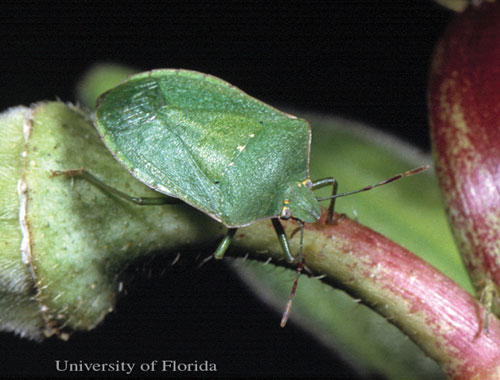Wahoos Top The MS Braves
June 28, 2015
Before the end of the first half of Southern League play, Pensacola Blue Wahoos manager Pat Kelly said he needed a closer.
That closer currently is Zack Weiss, who did what a reliever is supposed to do—preserve a one-run win in the ninth.
The Blue Wahoos defeated the Mississippi Braves, 1-0, thanks to Weiss getting a game ending double play in front of 4,072 fans Saturday at Trustmark Park.
Weiss has now allowed no runs in five innings and converted two-of-two save opportunities in his last four games since June 15. On the season, Weiss is 0-3 with a 4.91 ERA.
Kelly has credited Weiss’s return to form to watching videotape of his throwing motion with pitching coach Jeff Fassero.
Right-hander Tim Adleman remains the Blue Wahoos most consistent starter. He pitched eight scoreless innings, allowed four hits, walked one and struck out five. He lowered his ERA to 2.09, which is among the best in the Southern League.
Pensacola scored its only run in the sixth inning. Right fielder Jesse Winker started the rally with a leadoff walk and scored when shortstop Juan Perez, who went 2-4, singled to right field to put the Blue Wahoos ahead, 1-0.
Winker, the Cincinnati Reds No. 2 prospect, has started the Southern League’s second half off hot for the 2-1 Blue Wahoos. He’s now batting .545 (6-11), getting two hits in each of the first three games in the series against Mississippi. Winker has a homer, two RBIs, three runs scored and three walks, so far.
Pensacola catcher Kyle Skipworth, who came of the disabled list and played in his first game in over a month had a second strong day at the plate. He’s now 4-8 with two doubles, going 2-4 in both games against Mississippi.
Scott Cut $1 Million For Highway 29, Muscogee Road Work; Intersection Improvements Coming
June 27, 2015
When Gov. Rick Scott signed Florida’s budget Tuesday, he slashed $461 million in projects, including $1 million that would have gone toward upgrading the Muscogee Freight Corridor in Cantonment.
The $1 million would have been for widening and resurfacing along the Muscogee Freight Corridor — Muscogee Road from Highway 29 to the Alabama state line. Without the added cash from the state, county officials say the project is on hold.
However, improvements are still forthcoming in the area of the Highway 29 and Muscogee Road intersection. Escambia County recently received a $1.95 million grant from the State of Florida Economic Development Transportation Fund. The grant will be used for intersection improvements, a turn lane, and improvements to the International Paper entrances along Highway 29 and Muscogee Road.
The entire intersection project is estimated to cost $2.09 million, with the county pickup up the $140,000 difference above the grant. Work is expected to begin in about 60 days.
Pictured: The intersection of Highway 29 and Muscogee Road in Cantonment. NorthEscambia.com photo, click to enlarge.
Cantonment Dollar General Robbery Under Investigation (With Video)
June 27, 2015
An armed robbery at the Dollar General in Cantonment is under investigation.
The holdup happened just after 8:00 a.m. Friday at the store in the 1400 block of Highway 29, near Winn Dixie. The store was closed today for work to be done. Both employees and service company employees were in the building when a black male entered, pointed a gun and them and forced them to the floor.
He stole jewelry from employees and contractors, while forcing an employee to empty cash from the safe.
The suspect was wearing a very distinctive black leather jacket with the word “CHEVY” and the automaker’s emblem printed on it and a hat with long ties. He fled with an undetermined amount of cash.
Surveillance video is at the bottom of this story. If you do not see it, it is because you home, work or school firewall is blocking YouTube video.
Anyone with information on the robbery is asked to call Crime Stoppers at (850) 433-STOP or the Escambia County Sheriff’s Office at (850) 436-9620.
Escambia Man Faces Up To 40 Years For Drive-By Shooting
June 27, 2015
An Escambia County man is facing up to 40 years in prison for a 2014 drive-by shooting.
 Ahmad Sheaffers was convicted by an Escambia County Jury for two counts of aggravated assault with a firearm, shooting from a vehicle and shooting at a dwelling.
Ahmad Sheaffers was convicted by an Escambia County Jury for two counts of aggravated assault with a firearm, shooting from a vehicle and shooting at a dwelling.
The charges stem from a drive by shooting that occurred June 21, 2014, in the area of Fisher Street and Gonzalez Court. The defendant, known as “Spook”, was identified by witnesses at the scene as being one of possibly two shooters in the backseat of a vehicle. A home received multiple gun shots, but no one was injured in the shooting.
Circuit Judge Edward P. Nickinson, III remanded Sheaffers into custody and scheduled his sentencing for August 14. Under Florida’s 10-20-Life law, Sheaffers is facing 40 years in state prison as minimum mandatory.
U.S. Supreme Court Upholds Same-Sex Marriage
June 27, 2015
In a landmark decision heralded by gay-rights supporters, a closely divided U.S. Supreme Court ruled on Friday that same-sex couples have a fundamental fight to marry, forcing 14 states to join dozens of others — including Florida — where the unions have already been declared legal.
 In the 5-4 majority opinion, Justice Anthony Kennedy wrote that marriage is “essential to our most profound hopes and aspirations,” “sacred to those who live by their religions” and offers “unique fulfillment to those who find meaning in the secular realm.”
In the 5-4 majority opinion, Justice Anthony Kennedy wrote that marriage is “essential to our most profound hopes and aspirations,” “sacred to those who live by their religions” and offers “unique fulfillment to those who find meaning in the secular realm.”
Friday’s decision was issued on the second anniversary of the historic ruling in the United States v. Windsor case that overturned the federal Defense of Marriage Act.
Settling split appellate court decisions on gay marriage bans, Friday’s ruling in the Obergefell v. Hodges case overturned prohibitions in Kentucky, Michigan, Ohio and Tennessee upheld by the Sixth Circuit Court of Appeals.
“No union is more profound than marriage, for it embodies the highest ideals of love, fidelity, devotion, sacrifice and family,” Kennedy wrote. “In forming a marital union, two people become something greater than once they were.”
Justices Stephen G. Breyer, Ruth Bader Ginsburg, Elena Kagan and Sonia Sotomayor joined the Kennedy opinion.
In a harshly-worded dissent, Chief Justice John Roberts wrote that states should have final say on the matter.
“However heartened the proponents of same-sex marriage might be on this day, it is worth acknowledging what they have lost, and lost forever: the opportunity to win the true acceptance that comes from persuading their fellow citizens of the justice of their cause. And they lose this just when the winds of change were freshening at their backs,” he wrote. The other three dissenting justices — Samuel Alito, Antonin Scalia and Clarence Thomas — also penned their own opinions.
But Greg Bourke, one of the plaintiffs in the Kentucky case, told reporters that, if left to voters or the Legislature in his state, he did not believe he and his long-term partner, Michael De Leon, would be able to wed in their lifetimes.
“The judge, with all due respect, does not understand what it’s like for gay people in Kentucky,” Bourke said in a telephone interview. “After 33 years together, Michael and I feel like we deserve this opportunity to have our marriage recognized.”
Gay couples in Florida have been able to get married since January, based on a federal judge’s ruling that the state’s voter-approved, same-sex marriage prohibition violated Fourteenth Amendment guarantees of equal protection and due process.
Friday’s ruling clears up any uncertainties about whether U.S. District Judge Robert Hinkle’s Florida ruling, issued last August, would stand.
“We have always sought finality on this important constitutional issue, and today the United States Supreme Court provided the clarity our state and country was seeking,” Attorney General Pam Bondi, who represented the state in the Florida lawsuit, said in a statement Friday. “Legal efforts were not about personal beliefs or opinions, but rather, the rule of law. The United States Supreme Court has the final word on interpreting the Constitution, and the court has spoken.”
Friday’s decision ignited intense emotional reaction from both sides, including from President Obama, who said that the ruling “reaffirmed that all Americans are entitled to the equal protection of the law.”
The decision will end a “patchwork system” throughout the country, Obama said.
“It will end the uncertainty hundreds of thousands of same-sex couples face from not knowing whether their marriage, legitimate in the eyes of one state, will remain if they decide to move [to] or even visit another. This ruling will strengthen all of our communities by offering to all loving same-sex couples the dignity of marriage across this great land,” he said.
But Florida Family Policy Council President John Stemberger, the force behind the state’s constitutional ban, vowed that the fight over same-sex marriage isn’t over.
“Regardless of how it appears, today’s decision is not the final word on marriage. The U.S. Supreme Court has been wrong before, as in the case of Dredd Scott when the court attempted to declare that black people were not persons. The court was also wrong in Roe vs. Wade when it effectively declared that unborn children were not persons. Once again, the court is wrong today in its attempt to force all 50 states and all U.S. citizens to legally declare that marriage is something other than the union of one man and one woman,” Stemberger said in a statement.
Kennedy, whose opinion relied heavily on the Windsor decision, also wrote that excluding same-sex couples from marriage hurts children.
“Without the recognition, stability, and predictability marriage offers, their children suffer the stigma of knowing their families are somehow lesser. They also suffer the significant material costs of being raised by unmarried parents, relegated through no fault of their own to a more difficult and uncertain family life. The marriage laws at issue here thus harm and humiliate the children of same-sex couples,” he wrote.
But Michael Sheedy, executive director of the Florida Conference of Catholic Bishops, said that children are harmed by what he called a redefinition of marriage.
“As more and more children are not raised in a family with their own married mother and father in a stable home, it’s a great concern to us,” Sheedy said. “Marriage has been, for millennia, the only institution that unites one man and a woman and any children born in their union. That’s really been the basic building block of society.”
Jacksonville civil rights lawyer Betsy White and her husband, Bill Sheppard, represented two gay couples who successfully overturned Florida’s ban.
White said she expects pushback from state legislatures and others who will try to impose restrictions on gay marriage, similar to what has happened in the decades since the landmark abortion decision.
“Whenever there is an issue that is controversial, you are always going to see a certain segment of society that is going to basically be dragged along,” White said Friday. “It is unfortunate that people hold those views. But from my perspective, it’s not going to hold the progress back.”
The highly-anticipated ruling sparked celebrations from gay-marriage advocates throughout the nation, including in Florida, where events were held from Key West to Pensacola.
Jim Brenner, one of the plaintiffs represented by White and Sheppard who decided to challenge the Florida law, called the ruling “a great day for all Americans because it shows that our system works.”
Brenner told the News Service of Florida that he intends to ignore Roberts’ dissent.
“There really isn’t any reason at this point to bother myself over what he might be thinking,” Brenner, who lives in Tallahassee, said. “Those four justices lost. And that’s all I need to know. For me, what President Obama said this morning was far more important. …We all become more free when everyone is treated equally.”
by Dara Kam, The News Service of Florida
Showers And Thunderstorms Likely Today And Sunday
June 27, 2015
Here is your official North Escambia area forecast:
Saturday Night: Showers and thunderstorms likely. Mostly cloudy, with a low around 71. West wind 5 to 10 mph. Chance of precipitation is 60%.
Sunday: A 40 percent chance of showers and thunderstorms. Partly sunny, with a high near 86. North wind around 5 mph.
Sunday Night: A 20 percent chance of showers and thunderstorms. Partly cloudy, with a low around 70. West wind around 5 mph becoming calm.
Monday: A 20 percent chance of showers and thunderstorms. Mostly sunny, with a high near 90. Light west wind becoming southwest 5 to 10 mph in the morning.
Monday Night: A 20 percent chance of showers and thunderstorms. Mostly cloudy, with a low around 74. Southwest wind 5 to 10 mph.
Tuesday: A 40 percent chance of showers and thunderstorms. Partly sunny, with a high near 90. Southwest wind 5 to 10 mph.
Tuesday Night: A 30 percent chance of showers and thunderstorms. Mostly cloudy, with a low around 75. Southwest wind 5 to 10 mph.
Wednesday: A 30 percent chance of showers and thunderstorms. Partly sunny, with a high near 90.
Wednesday Night: A 10 percent chance of showers and thunderstorms. Mostly cloudy, with a low around 75.
Thursday: A 30 percent chance of showers and thunderstorms. Mostly sunny, with a high near 92.
Thursday Night: A 20 percent chance of showers and thunderstorms. Partly cloudy, with a low around 75.
Friday: A 20 percent chance of showers and thunderstorms. Mostly sunny, with a high near 93.
Aggies Tie Navarre, Beat Catholic In Milton Tourney
June 27, 2015
In summer baseball Friday, the Tate High School Aggie A Team tied Navarre 7-7 in game one of the Milton Panther Tournament. In game two, the Tate Aggies beat Catholic 15-6.
Weekend Gardening: Tomato Pests
June 27, 2015
June is prime time for growing tomatoes here in Escambia County, but it’s also the best time to see a lot of pests in tomatoes that can totally ruin a crop. To help you figure out what’s “bugging” your tomatoes, here’s a quick rundown of some of the pests that you might see in your garden. Much of the information in this article was adapted from the University of Florida EDIS (Electronic Data Information Source) publication Insect Management for Tomatoes, Peppers, and Eggplant. Management techniques for the pests will be found in the full publication.
Click any photo to enlarge.
Silverleaf Whitefly
 The adult silverleaf whitefly is small, approximately 1/16 of an inch in length, and has powdery white wings held tent-like while at rest over a yellow body. Whiteflies are usually found on the undersides of leaves. Eggs, which are yellow and football-shaped, are attached upright by a tiny stalk inserted into the lower leaf surface. A mobile first instar (growth stage), or crawler stage, hatches from the egg and settles on the leaf. It then develops through immobile second, third, and fourth instars which look like semi-transparent, flat, oval scales. The fourth instar or “pupa” is more yellow and more easily seen without the aid of a hand lens, and typically has very distinct eyespots, and is referred to as a “red-eyed nymph.”
The adult silverleaf whitefly is small, approximately 1/16 of an inch in length, and has powdery white wings held tent-like while at rest over a yellow body. Whiteflies are usually found on the undersides of leaves. Eggs, which are yellow and football-shaped, are attached upright by a tiny stalk inserted into the lower leaf surface. A mobile first instar (growth stage), or crawler stage, hatches from the egg and settles on the leaf. It then develops through immobile second, third, and fourth instars which look like semi-transparent, flat, oval scales. The fourth instar or “pupa” is more yellow and more easily seen without the aid of a hand lens, and typically has very distinct eyespots, and is referred to as a “red-eyed nymph.”
As the plant grows, leaves bearing the maturing nymphs are found lower down on the plant, so older nymphs can be found by looking at older leaves. Whiteflies ingest sap from the plant vascular system (phloem) through stylets similar to those of aphids and, like aphids, process a relatively large volume of plant sap by excreting excess liquid in the form of a sugary substance called honeydew. The honeydew will result in sooty mold—a black, powdery looking substance that reduces photosynthesis in the leaves. Sometimes the nymphs will feed on the fruit and that will cause white tissue on the inside of the fruit walls.
Aphids
 Aphids are soft-bodied, sucking insects that can rapidly colonize plants due to their short life cycle. Adults are delicate, pear- or spindle-shaped insects with a posterior pair of tubes (cornicles), which project upward and backward from the end of the abdomen and which are used for excreting a defensive fluid. In Florida, winged and wingless forms are all female and give birth to living young (nymphs). Nymphs are smaller but otherwise similar in appearance to wingless adults, which they become in 7 to 10 days.
Aphids are soft-bodied, sucking insects that can rapidly colonize plants due to their short life cycle. Adults are delicate, pear- or spindle-shaped insects with a posterior pair of tubes (cornicles), which project upward and backward from the end of the abdomen and which are used for excreting a defensive fluid. In Florida, winged and wingless forms are all female and give birth to living young (nymphs). Nymphs are smaller but otherwise similar in appearance to wingless adults, which they become in 7 to 10 days.
Heavy aphid infestations may cause stunting and leaf distortion. Feeding on blossoms reduces fruit set. Sooty mold will grow on the honeydew that the aphids excrete. Aphids may also spread plant viruses.
Brown and Green Stink Bugs and Leaf-footed bugs
 Like aphids and whiteflies, true bugs are sucking insects. True bugs can be recognized by their front wings, which are leathery close to the body but membrane-like at the tips. Nymphs resemble adults in shape but are often colored differently and do not have fully developed wings. Stink bugs are green or brown shield-shaped bugs 1/2 to 2/3 of an inch long. Eggs are barrel-shaped and found on the undersides of leaves in masses of 10 to 50.
Like aphids and whiteflies, true bugs are sucking insects. True bugs can be recognized by their front wings, which are leathery close to the body but membrane-like at the tips. Nymphs resemble adults in shape but are often colored differently and do not have fully developed wings. Stink bugs are green or brown shield-shaped bugs 1/2 to 2/3 of an inch long. Eggs are barrel-shaped and found on the undersides of leaves in masses of 10 to 50.
Leaf-footed bugs are dark-colored true bugs with parallel sides. Eggs are metallic and ovate but somewhat flattened laterally and laid in clusters. Some leaf-footed bugs lay their eggs end-to-end in a single row or chain along a stem or leaf midrib. Nymphs are oblong in shape and red in color, especially on the abdomen.
Nymphs and adults of both stink bugs and leaf-footed bugs suck juices from green fruit leaving a puncture which later may become surrounded by a discolored zone due to invasion of secondary pathogens. Stink bug feeding punctures are often surrounded with a lightened, sometimes depressed, blotch beneath the fruit surface caused by the removal of cell contents and the enzymes injected by the bug. Leaf-footed punctures may cause fruit to become distorted as they enlarge
Tomato Hornworm
 There are many caterpillars that can feed on tomatoes but the tomato hornworm can strip a plant of leaves in a few days. The adult moth is large with mottled brown forewings that are longer than the lighter brown hind wings. The sides of the abdomen have five yellow spots on the sides. The female moth will lay eggs on the upper and lower surfaces of leaves. The adult moths are nectar feeders on many flowers and may be seen in the early evening around gardens and flowers.
There are many caterpillars that can feed on tomatoes but the tomato hornworm can strip a plant of leaves in a few days. The adult moth is large with mottled brown forewings that are longer than the lighter brown hind wings. The sides of the abdomen have five yellow spots on the sides. The female moth will lay eggs on the upper and lower surfaces of leaves. The adult moths are nectar feeders on many flowers and may be seen in the early evening around gardens and flowers.
The emerging caterpillars will feed on leaves and go through several molts as they develop into large green caterpillars with a black ‘horn’ on the tip of the abdomen. Caterpillars are also identified by the white or yellow ‘V’ marks on the sides of the abdomen. When it is time to pupate, the caterpillars drop to the soil and make a cell for changing to the adult moth. The pupa is reddish brown and has a loop structure at the head that contains the mouthparts. There are normally two generations of tomato hornworm a year and as late summer arrives, the hornworm goes through a resting phase.
Other plants in the tomato family can be eaten by tomato hornworms but tomatoes are the favorite in our area. The caterpillars will eat entire leaves and initially work their down on the plant, eating leaves, blossoms, and even green fruit. Because they blend in with green foliage, a homeowner will often overlook the caterpillar despite its large size.
Hornworm does have natural enemies so be cautious before reaching for the insecticide. They can also be easily handpicked and destroyed after you find them.
If you would like further information, please contact the Escambia County Extension office, (850) 475-5230.
Mississippi Beats The Wahoos
June 27, 2015
After giving up six runs in 4.1 innings in his last start against the Mobile BayBears, Pensacola righty Daniel Wright gave up just three hits and one earned run in seven innings of work against the Mississippi Braves Friday.
But the one run was all the Braves needed in a, 1-0, victory at Trustmark Park over Pensacola and Wright, who dropped to 3-6 on the season.
Wright struck out eight and his ERA dropped to 5.47. In the last three starts, Wright had given up 14 earned runs in 16.1 innings for a 7.83 ERA.
Mississippi got two of those hits in the sixth inning, which led to the Braves game-winning run. Catcher Braeden Schlehuber singled to left field and then ended up scoring on left fielder Matt Lipka’s single, which deflected off of Pensacola third baseman Seth Mejias-Brean’s glove to shortstop Zach Vincej.
Mississippi third baseman Rio Ruiz got the other hit off of Wright in the game.
One bright spot in the month of June has been Cincinnati Reds No. 2 prospect Jesse Winker, who is hitting .315 in June. He’s clubbed two homers and driven in eight runs.
On Friday, Winker went 2-3 with two walks to raise his season average to .257. Thursday against Mississippi, he went 2-5 with a homer and two RBIs.
Pensacola catcher Kyle Skipworth also got off to a fast start, coming off the disabled list and playing in his first game since May 27. He went 2-4 with a double Friday.
Florida Gov’t Weekly Roundup: No So Lazy Days Of Summer
June 27, 2015
After the merciful end of the special session and the months-long process of legislating, it looked like this week would be the beginning of the normal quiet days of summer in Tallahassee. Sporadic news might break out, like the almost-daily rain storms that drench the city most afternoons, but it would be more a slow drizzle than a downpour.
Not quite.
 On the first week without lawmakers in town or about to return for quite some time, the Capitol and its denizens managed to stay busy. Gov. Rick Scott took to the state budget like the villain in a slasher film, slicing almost half a billion dollars from the spending plan and setting off waves of anger in the state Senate. In two cases that could have had far-reaching ramifications in Florida, the U.S. Supreme Court upheld same-sex marriage and a key provision in Obamacare. Even the lawyers handling matters closer to home had plenty to do, dealing with everything from hospital funding to land-buying programs.
On the first week without lawmakers in town or about to return for quite some time, the Capitol and its denizens managed to stay busy. Gov. Rick Scott took to the state budget like the villain in a slasher film, slicing almost half a billion dollars from the spending plan and setting off waves of anger in the state Senate. In two cases that could have had far-reaching ramifications in Florida, the U.S. Supreme Court upheld same-sex marriage and a key provision in Obamacare. Even the lawyers handling matters closer to home had plenty to do, dealing with everything from hospital funding to land-buying programs.
The summer will eventually take hold, and the capital city will almost certainly return to its midyear slumber. But the relief would wait for another week, at least.
FLORIDA CHAINSAW MASSACRE
Scott’s willingness to use his veto pen has waxed and waned over his years as governor. In 2011, his first year in office, he boasted of striking $615 million from the spending plan, but that was inflated by getting rid of $305 million of largely imaginary spending that would be supported by selling state lands — a scheme that even backers didn’t believe would produced anywhere close to the promised funds.
Last year, facing re-election and needing lawmakers’ support for his priorities, Scott had a particularly light touch, trimming just $68.9 million from a roughly $77 billion budget.
This year was more like 2011, and then some. The governor slashed away with gusto, removing 450 lines totaling almost $461.4 million from the spending plan for the budget that begins next month. Everything from pay increases for state firefighters to the orange and grapefruit juice tourists can pick up at visitors centers were cut. The once $78.7 billion budget shrunk to $78.2 billion.
“I went through the budget looking at every project saying, ‘What’s a statewide priority? Can I get a good return on investment? Has it gone through a state process?’” Scott told reporters.
Regardless of that official explanation, others saw an unstated game of hardball playing out. Almost every one of Scott’s legislative priorities were reduced in size during both the regular session that ended in May and the special session that ran through most of June, and the governor was sidelined on some of the other major debates.
A plan to increase hospital spending to offset a loss in federal funds — a fix Scott opposed — was put in the budget and written in a way that made it virtually impossible for the governor to veto. And a Medicaid expansion alternative that Scott fiercely opposed passed the Senate despite the governor’s threat to use his veto against supporters. The plan eventually died in the House.
“He promised that he would punish the constituents of those legislators who disagreed with him, and he kept his promise,” said Sen. Don Gaetz, R-Niceville.
Not everyone was critical. House Appropriations Chairman Richard Corcoran, R-Land O’ Lakes, applauded Scott for looking out for taxpayers and trying to impose some accountability in the budget process.
“In the totality of it, I think he did a great job of recognizing we’re not dealing with Monopoly money,” Corcoran said.
Others were left wistfully recalling the 2014-vintage Scott.
“What a difference a year makes,” said Senate Appropriations Chairman Tom Lee, R-Brandon. “I wish I could’ve been the appropriations chair in an election year.”
FROM ‘SCOTUSCARE’ TO ‘UNIQUE FULFILLMENT’
Like many other states, Florida was keeping an eye on the U.S. Supreme Court this week as justices rolled out some of the most important decisions of their soon-to-end 2014-15 term. Two in particular could have shaken things up — a ruling on insurance premium subsidies in the Affordable Care Act, and a decision on whether same-sex marriage was a right guaranteed by the U.S. Constitution.
In both cases, the decision went the way of no change. But that meant more in one case than in the other.
In a 6-3 ruling issued Thursday, the court upheld the tax credits at the heart of the Affordable Care Act’s federal exchange, preserving health insurance for more than 1 million Floridians but providing no larger solutions to the national or statewide divisions on the law.
In a case that hinged on what Congress meant by making tax credits for insurance available to people using “an exchange established by the state,” a majority of justices found that credits could be given to people who purchase coverage through an exchange — like Florida’s — set up by the federal government because the state doesn’t operate one.
Writing for the majority, Chief Justice John Roberts said other parts of the law made it clear that federal exchanges were supposed to function largely like marketplaces run by states.
“But state and federal exchanges would differ in a fundamental way if tax credits were available only on state exchanges — one type of exchange would help make insurance more affordable by providing billions of dollars to the states’ citizens; the other type of exchange would not,” Roberts wrote.
He was joined by Justices Anthony Kennedy, Ruth Bader Ginsburg, Stephen Breyer, Sonia Sotomayor and Elena Kagan.
In a sharply-worded dissent, Justice Antonin Scalia accused the court of twisting provisions of the law to preserve the Affordable Care Act. Scalia also dissented in a 2012 case that upheld the constitutionality of the act.
“Today’s opinion changes the usual rules of statutory interpretation for the sake of the Affordable Care Act. That, alas, is not a novelty…We should start calling this law SCOTUScare,” Scalia wrote in an opinion joined by Justices Clarence Thomas and Samuel Alito.
Another sharp clash came in the court’s consideration of same-sex marriage. In that case, decided 5-4, the court found that gay couples could not be denied the right to marry. The ruling removed lingering doubts surrounding a Florida case in which a federal judge struck down the state’s voter-approved ban on gay unions.
“No union is more profound than marriage, for it embodies the highest ideals of love, fidelity, devotion, sacrifice and family,” Justice Anthony Kennedy wrote. “In forming a marital union, two people become something greater than once they were.”
In both cases, those on the losing side vowed to fight on. Florida Family Policy Council President John Stemberger, the force behind the state’s constitutional ban on same-sex marriage, said the battle is far from over.
“Regardless of how it appears, today’s decision is not the final word on marriage. The U.S. Supreme Court has been wrong before, as in the case of Dredd Scott when the court attempted to declare that black people were not persons. The court was also wrong in Roe vs. Wade when it effectively declared that unborn children were not persons. Once again, the court is wrong today in its attempt to force all 50 states and all U.S. citizens to legally declare that marriage is something other than the union of one man and one woman,” Stemberger said in a statement.
NEW LIP STICKS, AND OTHER COURT FIGHTS
As Scott was cutting away at the state budget, the fight that had almost derailed it was coming to an end. After months of wrangling about the issue, a top federal official Tuesday outlined a deal to continue Florida’s Low Income Pool health-funding program for two years.
Federal official Vikki Wachino sent a letter to state Medicaid director Justin Senior that said an agreement “in principle” has been reached about the size of the program and how money will be divvied up among hospitals and other health providers.
Many of the details reflect preliminary information released last month and used by lawmakers in drawing up a state budget that signed by Scott. Those details include $1 billion in so-called LIP funding for the fiscal year that starts July 1 and a drop in funding to $608 million for the fiscal year that starts in July 2016.
The Low Income Pool, which has totaled $2.2 billion during the current fiscal year, sends additional money to hospitals and other providers to help cover the costs of treating uninsured and poor patients. The program had been scheduled to expire June 30, touching off political and legal battles.
The “great victory” prompted Scott to drop a lawsuit over the LIP funding. But another budget-related court fight loomed.
Supporters of a voter-approved constitutional amendment on land conservation funding filed a lawsuit Monday claiming state lawmakers misappropriated more than $300 million of the money voters wanted for environmental land management and acquisition.
Also, supporters of the ballot initiative want a court to declare exactly what lawmakers can and can’t do with the Amendment 1 money.
The lawsuit, filed in Leon County circuit court, contends that in using the money for expenses such as staff operations and salaries, the Legislature “defied the constitutional mandate” in spending less than half of the money for the purposes intended by voters.
Gardiner, who said in a statement that he was limiting his comments until he could further review the lawsuit, supported the Legislature’s Amendment 1 spending plan.
“The budget the Senate unanimously passed on Friday not only meets, but by every measure exceeds the requirements of Amendment 1, including the use of general revenue to add to ‘doc stamp’ funds set aside by the amendment to further fund important environmental initiatives clearly spelled out in the ballot language,” Gardiner said in a statement.
STORY OF THE WEEK: Gov. Rick Scott signed the state budget, but only after vetoing $461.4 million in local projects and other spending.
QUOTE OF THE WEEK: “Do we want to celebrate and sanction a symbol on public property that reminds us of hatred, slavery and division? Do we want to pass down a feeling of complacency with the status quo on this issue to my children and your children? I love the South and know we are better than this.”—Daniel Uhlfelder, a Walton County lawyer lobbying for the removal of a Confederate flag flying in front of the courthouse in DeFuniak Springs. The flag has come under fire across the nation in recent weeks after a man suspected of harboring white supremacist views allegedly killed nine black church-goers in South Carolina.
by Brandon Larrabee, The News Service of Florida







